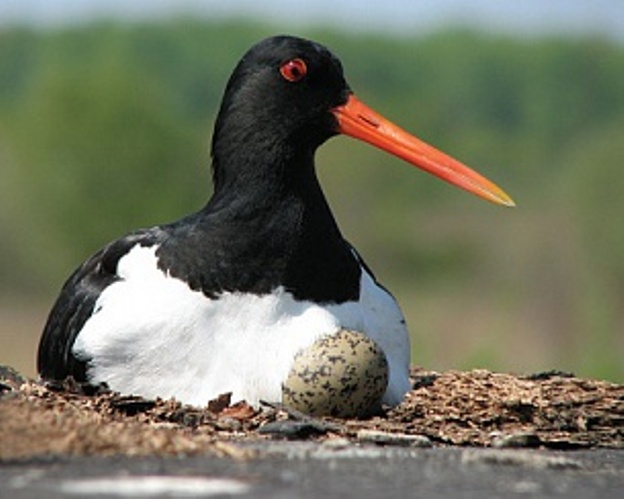A group of scientists-ornithologists composed of the more than 70 people from different countries compared the behavior of 32 species of shorebirds nesting in different corners of the globe. First of all they were interested in the behavior of birds during the incubating eggs season. For this different equipment was used – cameras, camera traps, geologgers. The latter are the illumination recorder that was attached to the legs of shorebirds. Thanks to geologgers scientists were able to establish a continuous periods of incubation egg laying by birds and their duration.
During the analysis of the data revealed that the shorebirds are inherent very diverse rhythms of hatching eggs. In some cases, parents have succeeded each other in the nest frequently, while others hatch the eggs alternately a day or more. Thus these rhythms practically did not depend on the change of day and night, and are likely to be some kind of “agreement” about the change frequency between the two parents. In addition, variety of brooding rhythms is due to the color of shorebirds – a bird with conspicuous coloration succeeded each other more often than the birds with color, allowing almost completely merge with the background. For the latter, a long stay in the nest more profitable, as they become visible for predators only in the moment of change of the parents.
The contribution to the study made Russian scientists too. P. S. Tomkovich, world-renowned expert on Arctic shorebirds and leading researcher of the Zoological Museum of the Faculty of Biology, Moscow State University, along with another Russian expert on these birds E. Loktinov provided for the project data obtained in the south of Chukotka. This information has been systematised thanks to the project “Noah’s Ark” – the repository of genetic biological material of all types of living organisms of the Earth.
Journalists of E-Vesti asked P. S. Tomkovich about the details of this study.

Tomkovich P. S.: The initiator and main executor of this study was the Institute for Ornithology of the Max Planck in Germany. Employees of the institute collected, summarized and analyzed data obtained from 76 scientists from around the world. My role in this study was also to provide the information obtained as a result of work in Chukotka. Getting this information was possible thanks to the participation in the project “Noah’s Ark”, as my work was funded in the framework of this grant.
EV: Tell me please, in what other studies are you participate now? What more are you doing in the project “Noah’s Ark”?
Tomkovich P. S.: At the moment, we prepared for printing a new article together with the Finnish colleagues. In it you will learn about genetic research other shorebird – terek sandpiper. They are based on generalized materials throughout the area propagation of this bird – from Finland to Chukotka. This study was also carried out in the framework of the project “Noah’s Ark”. But it is a scientific piece of work. But there is another side of the project. Now our Zoological Museum holds cataloging of the entire collection. And we began to do it just with the ornithological part of it, which I run. Almost 140’000 birds of this collection, accumulated over half a century, will be included in the electronic catalog. We plan to complete this work in about a year. Its results will be made available to the public – the catalog can be viewed via the Internet.





